We help cultural institutions use technology to connect with their audiences and do better business.
Don't wanna be here? Send us removal request.
Photo

Digital Here to Stay
At 1AM on Friday, October 9th, I got a group text from a playwright friend: Broadway was once again pushing back its reopening date to June 1st, 2021.
I wish I could say it came as a surprise. Only a couple weeks earlier the Metropolitan Opera cancelled its 20/21 season, and anyone who’s remotely considered event logistics in the past 6-7 months could rattle off a hundred hurdles involved in reopening any kind of venue. That list grows exponentially when the venue houses a minimum of 500 people in a city where you’re lucky to get 6 inches let alone 6 feet. Rather than shocking the community, this announcement reiterated once again that the performing arts industry will be one of the last to return. So it’s time for organizations to ensure their digital solutions are going to service long-term needs, and seize underlying opportunities.
One Step at a Time
Performing arts’ biggest strength has been the live in live theater. It’s a double-edged sword: creating economic barriers and gatekeeping for many, but also generating a unique high for those that are able to experience it even on a small scale such as school recitals, or indie theater. At the beginning of the pandemic, artists at every level of the industry rapidly pivoted to produce content without its biggest strength.
Zoom became prevalent not just for teleconferencing, but for digital events and classes. One of the most common requests I’ve gotten in the past few months is “can we embed a Zoom link in our order confirmation?” (the answer is “yes”). But while artists explored radio dramas, wrote plays specifically for digital forums, held digital festivals, and tried to make do, the focus was always on what it would look like to return home. As often as I’ve been asked about embedding links in confirmation emails, many organizations have opted to hold off on radical changes because of the ever shifting landscape and the knowledge that the current state of affairs is temporary.
Last Friday’s announcement makes it clear that “temporary” is going to last a lot longer than we hoped. Even regions that are beginning to reopen for outdoor or distanced performances need to find a way to cater to patrons that cannot safely return to venues, and contend with the impending arrival of winter. This is no longer about creating a safety checklist, and measuring the width of seats. Top to bottom, organizations must consider digital viability in all programming for the next year. We can no longer say “hold, please” to infrastructure changes that will support the performing arts during the rest of this pandemic, particularly when it has the potential to increase accessibility across the board.
Plan Ahead
Distance makes planning even more important than when leadership was able to collaborate in person. In a normal year, every production season is planned to suit a wide variety of audiences, tastes, and artistic messages. Once shows are selected, resources are allocated and accounted for. A formal delay in the return to venues means these conversations now need to include digital logistics. Content curation must consider what pieces will work best when performers must be distanced or in completely different locations. Think carefully before slating a piece that requires physical intimacy or confrontation, consider smaller pieces over large ensemble productions.
No matter what content is selected, organizations should get in the habit of identifying opportunities for content creation. For many organizations, the Watch & Listen section was a repository for the passionate user, and good for SEO, but not a priority. Other organizations were only able to record content for archival purposes rather than public consumption. The early days of the pandemic quickly revealed this produced a gap between the potential of the digital space, and the available content. As we continue to oscillate between digital and physical spaces, and reach out to patrons who cannot safely attend performances, generating assets and high quality recordings will be a priority.
A 5-Star Hotel, not a Bates Motel
Digital content is a great way to continue to foster relationships with patrons while in-person interaction is limited or impossible, so organizations must ensure that the experience is a positive one. If you don’t have a natural home for videos already, start having conversations with hosting platforms to see which might be the right fit for you and your website. Consider whether you want to make the jump towards OTT platforms which allow users to access content on other devices rather than being tethered to a phone or computer. Whether you’re new, or a seasoned digital veteran, keep an eye on analytics to identify pain points in the digital path. Ensure that the journey through your content is a curated, and welcoming experience for patrons. Just as you would provide users with additional event information before expecting them to book, avoid abandoning users in a vast sea of videos with no context. Your event pages likely don’t bury the link to purchasing tickets, similarly your video landing pages should make it easy for users to choose what they want to watch and navigate to other recommended content.
Nice to E-Meet You
While it is tempting to stick with known, and familiar faces during uncertain times, the pandemic has also raised a fear that the performing arts will become even more exclusive. Organizations must take advantage of the opportunity to diversify and expand their network of collaborators and audience members. With no additional travel or housing costs, organizations can now reach and collaborate with people that would have been inaccessible before. Use this to your advantage - increase the diversity of the artists you work with and collaborate with organizations around the world that are succeeding in producing theater that represents their audience. Revel in the fact you can now compete for audiences that are outside a one hour drive of your venue. Expand your community and make your art more accessible to everyone so that when we are able to return, you’ll have an even wider community.
White Noise or Unique Contribution
The performing arts doesn’t have to beat Netflix at its own game, we need to stand apart. Before the pandemic every million dollar media company in entertainment was already entering the “streaming wars.” 10 years ago there was Netflix and YouTube, now there is a specialized streaming service for every channel and category of content clamoring for people’s cash and attention. It can be daunting for nonprofits to enter the ring without the massive production budgets available to cinema and television unless you remember what makes live art precious.
A live event is a unique blend of elements that can be recorded, but never be replicated. Even shows with extended runs will never have the same performance twice whether it’s a stubborn wig, a backstage prank, or the crash of thunder outside. Live art is real. There’s no CGI, no second take, it is all happening before your eyes. Hollywood spends millions of dollars every year trying to replicate reality by using extended takes and marketing multi-class actors doing their own stunts. I’ve binged more Netflix than I care to admit during the past 7 months, I’ve cried and cheered at my local AMC, but theater brings an audience together down to its pulse. And I get the same buzz of nerves before a digital performance that I did putting on my makeup in a utility closet turned green room, because live art done right is lightning in a bottle.
Nothing can be accomplished overnight. Everything I’ve mentioned is a long term commitment to the digital sphere, and there will be many trials before we reach tribulations. No matter how successful, none of this will replace live theater. It never could. Under the current timeline, Broadway will be shuttered for a total of 14 months, and smaller theaters are unlikely to lead a charge that Broadway won’t. An entire year, both creatively and financially, will be gone and many organizations with it. Broadway’s announcement sent only the most recent national wave of grief through the performing arts industry. Audiences are hurting over the loss of these shared experiences that made up their community. Hundreds of thousands of artists are yearning not just to perform, but to create and play without endangering ourselves. We miss creating with our friends and colleagues. We miss watching their performative joy, pain, and skill. But while we grieve, reality waits, and it is your responsibility to make sure that if you can survive, you do everything possible to thrive.
0 notes
Photo

Google Analytics 4 - What does it mean for you?
On Wednesday the folks at Google announced their new version of their analytics platform is now available for all. It’s called Google Analytics 4 and, after being available to selected partners in beta, this new property type replaces and expands on the features of the Web+App property type which was launched last year. This is the biggest update to Google Analytics since Universal Analytics launched many years ago.
We know many of you will have questions about these major updates, so we’ve tried to tackle some of them here.
What does this new version offer compared to the tried and tested version?
Here are new features and changes you can expect from Analytics Version 4:
Smarter Insights Although Google uses machine learning in the current version of analytics it always felt a little like a bolt on, tucked away and only used when called for. With version 4 Google have built the AI at the heart of it enabling it to fill gaps in the data, predict future customer behavior and identify trends. The hope for Google is that this intelligence will help business make smarter decisions in this currently changing and volatile landscape.
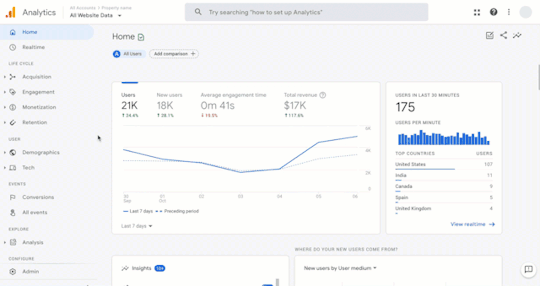
Deeper integrations with Google Marketing platform This deep integration with other applications in the marketing suite, especially with Google Ads, enables greater granulation of audience segments. The AI can now identify audiences on your behalf, such audiences based on predictive spend or lifetime value.
“With new integrations across Google’s marketing products, it’s easy to use what you learn to improve the ROI of your marketing.”
Customer Centric Analytics This new version of Analytics aims to help give you a more complete view of how customers are interacting with your business or organisation by bringing web and app metrics together in reports, along with the acquisition channels. The result is to produce reports that enable you to drill down to understand every aspect of the customer journey. This also allows you to easily combine data from multiple websites into a single property, in order to get a more complete picture of how users are interacting with your sites if they are crossing multiple domains and websites.
“For example, you can see if customers first discover your business from an ad on the web, then later install your app and make purchases there.”

User Privacy Google has introduced a new approach to the data controls within Analytics. With users and regulator bodies demanding more control on how organisations use their personal data, the aim of these new controls is to make it easier to collect and manage this data. This makes it simpler to identify those users, for example, who have given permission to collect Analytics data but have opted it out of personal ads on a site or app.
Future focused With the restrictions many browsers are adding on 3rd party cookies, Google understands that there may be gaps in data and their ambition is that machine learning and modelling will be able to accurately fill the void.
“Because the technology landscape continues to evolve, the new Analytics is designed to adapt to a future with or without cookies or identifiers. It uses a flexible approach to measurement, and in the future, will include modeling to fill in the gaps where the data may be incomplete”
Google understands that there may be tools and capabilities that users need from their current analytics set up, so they recommend running the new version in parallel with the current universal analytics for the time being.

How do I set up Google Analytics 4?
To get going you’ll need to set up a new property within your Google Analytics and either add the tracking code to your site manually or through Google tag manager. There is also a Setup Assistant assistant to help you through the process. Once complete, the new property will start to gather user data from your site or app. If you currently use ecommerce tracking, you will need to double check that the transaction data is flowing correctly once you see the data flowing.
Do I need to do anything right now?
We'd recommend setting up the new property straight away, so you start collecting data. You won’t be able to analyse existing data within the new property, so it really is a case of the sooner the better. Remember, this will not replace your Universal Analytics setup, so you can set up Google Analytics 4 in confidence that no historical data will be lost, enabling you to learn and evaluate the latest update at your own pace.
Don’t forget if you need any help in implementing the change or would like to know how to get the most out of Google Analytics 4 we are here to help. Just drop us an email [email protected] or if you’re an existing Made client, contact us via our Support Centre or your Digital Producer.
0 notes
Photo
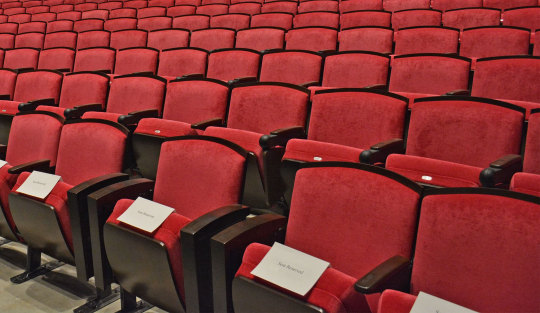
Repackaging for Uncertainty
It’s not news that the global covid-19 pandemic has severely impacted cultural institutions around the world. Here in New York, what was initially announced as a 1-month closure for Broadway was recently extended to the end of 2020, forcing theaters to go dark for at least 9 months. For single ticket purchases, sales can be painfully pushed back, shows rescheduled, credits offered, and emails blasted. But at this point, organizations are now looking at a 20/21 season that has been reduced by 50-70%. So while they ponder what a physically and financially safe reopening looks like, they’re also having to turn their attentions to another key portion of their audience: subscribers.
Every company will tell you they want to cultivate a relationship with their customers. From a brand perspective, you always want to have a key base of loyal consumers, and financially these are the patrons that will consistently return to make purchases. Arts and cultural institutions use annual packages to leverage their reliable volume and quality of programming, allowing them to build relationships with their patrons which span over decades, and sometimes generations. Rather than buying several tickets to individual shows, a package is a bundle deal. The benefits vary from org to org, early access to show dates, choice of seats, and discounted prices on the shows being some of the most common, but one thing is constant: in order to reap any of these benefits, patrons commit to multiple shows over the course of the year. As a relationship tool, packages are very effective. Theatre Communications Group (TCG) in New York City produces an annual fiscal analysis for national trends in the non-profit theater sector by gathering data from all across the country. In 2018 they gathered data from 177 theaters, and found that, on average, subscribers renewed 74% of the time.
This is about more than brand loyalty though: these packages represent a source of consistent income for theaters. Beyond the face value of individual tickets purchased by subscribers, which according to TCG’s research tally up to an average of $835k a year (with the highest earning tier of theaters surveyed pulling in an average of 2.5 million dollars), subscribers are much more likely to convert their attendance into other kinds of support for the organization. These patons can be marketed to with low risk (of annoyance) and high reward (in literal dollars). Thus, the value of subscriber relationships goes well beyond their sheer presence in the venue, making them one of the most consistently considered portions of the audience. At a time when uncertainty is the name of the game, a set of dependable patrons might seem like the perfect audience slice to reach out to right now.
However, since the rewards for packages typically revolve around early access, and require a multi-show commitment, subscription purchases and renewals usually receive a big push very early in the season sales cycle, putting them in a particularly vulnerable position at the start of the covid-19 pandemic. Furthermore, the extension of venue closures have not only shifted back sales dates, but also the seasons themselves leaving patrons with fewer shows to choose from, and fewer to commit to. This is forcing everyone to figure out how to salvage the potential income while still providing a valuable, and fair, experience to patrons. Thus far, we’re seeing three different answers to this question emerge.
Like-for-like
One straightforward approach is to roll with the punches and create mixed packages between this season (Season A), and next season (Season B). This works particularly well for orgs with consistent types of content every year. For example if an organization has a package of 5 Jazz concerts in Season A, but 3 of them are cancelled due to the pandemic, you just take 3 shows from Season B to replace them. Behind the scenes, this strategy does require a lot of hands-on adjustments if shows continue to be cancelled, but with the benefit of preserving the structure of the original package. Patrons also have a transparent view into how the value of their package is being preserved, however they are still tied to a specific show date with no knowledge of what the situation will be at that point.
Voucher Exchange
Another solution which has started to arise is the idea of a voucher system. Rather than trying to reschedule after a show in a package is cancelled, patrons are given vouchers which can be redeemed for a ticket to a future performance. For organizations, this option puts a lot of the workload at the front end, as it requires detailed business consideration: do vouchers expire? If so, how far in the future? Do the vouchers have a dollar value, or can they be exchanged 1:1 for a production? What happens if prices change between now and reopening, or if a user wants a ticket of a different value? (You get the gist). All that being said, once those business rules are set, it has the potential to put the other choices in the hands of the patron. Consequently, for patrons this option takes off some of the pressure: they don’t need to commit to another uncertain date in the future, instead they can be assured they are receiving the value of their package at a time that they feel comfortable.
Pay It Forward
A third option is to push the guesswork entirely to the future and allow users to purchase a set bundle of shows as normal, but with no mention of dates or seats. Instead of setting a calendar for the year, patrons are committing to content: 5 shows, rather than 5 dates. Some organizations have had this in place for early renewals for years, and find it to be an easy way to service patrons who are loyal to the organization through thick and thin. Ultimately though, this allows both parties to make more informed decisions about their theatergoing habits closer to the show itself, rather than 3 months ahead of an unknown future. That being said, this solution requires a lot of upfront discussions within the organization, and to the patron, about what might happen if patrons cannot attend the dates they are assigned either due to conflicts or continued safety concerns.
Anyone who’s remotely involved in the arts & culture sector will not be surprised that there is no one-size-fits-all solution. Some organizations will enjoy the straight-forwardness of mixing packages, others will want to allow for uncertainty and opt for the voucher system or the pay-it-forward option, still others will come up with an infinite number of alternate approaches to this issue. And of course, these solutions are all dependent on an optimistic future which is still a huge question mark: some areas are opening up, others are extending their closures, previously bankable organizations are filing for bankruptcy, and for every positive trend in cases there’s a spike somewhere else. In the game of whack-a-mole that is covid-19, the path towards reopening, and specifically a positive subscriber experience, is a tightrope: business rules will need to be clearly defined, messaging carefully considered, and customer service well briefed on the new practices. No matter what solution organizations opt for, it will need to be tailor fitted so that the patron relationships which will keep theater alive beyond this pandemic can be cultivated. Otherwise they run the risk of patrons feeling milked for money, and lemming marched into the theater.
0 notes
Photo

Leadership changes at Made
It’s been an odd few months for us here at Made Media, and I’m sure it has for all of you as well. Our clients all around the world have temporarily closed their doors to the public, and have gone through waves of grief, hope, and exhaustion. At the same time, our team has been busy working through the final stages of some big new projects, that are all due to launch in the next month. Tough times, new beginnings.
While all of us in the arts and cultural sector are struggling with the impact of Covid 19, we have also seen much increased demand for our Crowdhandler Virtual Waiting Room product. As a result of this we have made the decision to spin out this product from our core agency business in order to give it the focus and investment it deserves. Effective 1 July, we are setting up a new Crowdhandler company, majority-owned by Made, and we are making the following leadership changes:
I will become CEO of the new Crowdhandler company. It’s with a mixture of excitement and nostalgia that I am stepping down as CEO of Made Media today, after eighteen years, taking up the new role of non-executive Chair. A team of developers and cloud engineers from Made Media are moving with me to join the new Crowdhandler company.
James Baggaley, currently Managing Director, becomes CEO of Made Media. James joined Made in 2017 as Strategy Director, and since then has worked with Made clients around the world on some of our most involved projects. He has a long background of working in, with, and for arts and cultural organisations, with a focus on digital, e-commerce and ticketing strategy.
Meanwhile the Made team is on hand to help our clients as they navigate the coming months and beyond, and we can’t wait for all of these brilliant organisations to start welcoming audiences again.
0 notes
Photo

Announcing CultureCast
The rise of Covid-19 has forced cultural and arts organisations around the world to rapidly move their events online. In response to that, we have developed an easy to use, cloud-based paywall application to control access to your online video content.
It's called CultureCast and it lets you control who has access to your video content, and sell access on a pay-per-view basis. It’s a standalone application, and you don’t have to be an existing Made client to start using it!
Tessitura integration
CultureCast is currently available exclusively for Tessitura users, because it integrates with the Tessitura REST API in order to authenticate and identify users. You can sell video access via ticket purchases in Tessitura. And control access to videos via constituency codes in Tessitura.
Customisable
You can control the look and feel of CultureCast to match your brand, for no extra cost. You can also mask the URL with a dedicated subdomain (e.g., ondemand.yourvenue.org) for a one-off setup fee.
Video embed
You can embed video content into CultureCast from any online video provider that supports OEmbed. Vimeo and Brightcove are supported out of the box, and we’re working on built-in support for further providers.
Stripe payments
Customer payments are straightforward. You can process in-app payments via Stripe (with support for ApplePay and other mobile payment methods), with a Stripe account in your name and with the money automatically paid out to you on a rolling basis. You can also control the look and feel of the confirmation emails within the Stripe dashboard.
Pricing
There are no set-up costs to start using CultureCast.
You simply pay a service fee, set as a percentage of the revenue taken through the app. You are also responsible for paying Stripe payment processing fees, and for the cost of your video hosting platform. You don’t need to pay anything to get started, although there is a minimum charge once you reach over 1,000 video views per month via CultureCast.
This is just the beginning: we’re excited to continue development of CultureCast over the coming months and for that we need your feedback - so please try it out and let us know what you think!
If you’d like to get more details, check out our website at https://culturecast.tv, or drop us an email at [email protected].
0 notes
Photo

Live and on-demand video integration for the Detroit Symphony Orchestra
Even before a global pandemic forced arts audiences to seek out their cultural activities from their homes, Detroit Symphony Orchestra had an accessibility-first mission to bring world class programming to audiences locally and around the world. When Made took on the challenge to create a web experience worthy of that mission, one of the key features was integrating with their live and on-demand video programming.
Prior to the planned launch of the new dso.org, the orchestra was switching to Vimeo OTT as a host for their DSO Live, DSO Replay, and DSO Classroom Edition channels. Some videos were to be open to the public, while others required viewers to make an annual donation to the orchestra before they could access them.
To accomplish this within the new website, we built a viewing experience using the Vimeo OTT API, paired with the Tessitura API for user credentials and access. When a user on dso.org goes to watch a DSO Replay video, they are prompted to login or make a donation to continue. Once they’ve been successfully identified as a donor, they then have access to the full back catalogue of DSO Replay content.
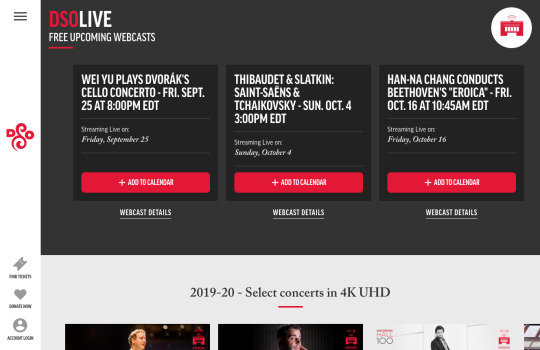
In order for Vimeo OTT to grant access to videos directly, accounts need to be created on their platform, based on the user’s email address. In order for Tessitura to grant video access, a specific constituency code must be active.

The first part of this implementation is to add the constituency when someone makes a contribution online. This allows them to watch the video directly and immediately through the DSO website. Additionally, an account is created in Vimeo OTT with the customer’s email address, so that future visits directly to the hosted platform do not require a website login. This also means that these customer credentials will work for any non-web deployments of Vimeo OTT, including via TV apps.
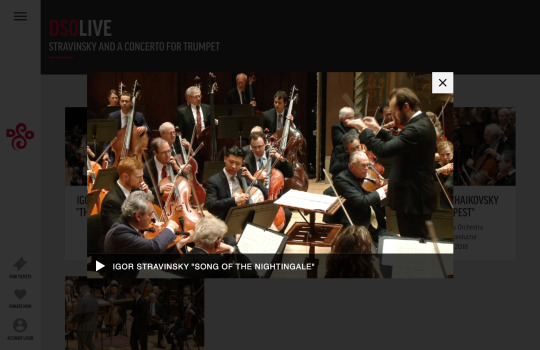
The other piece of this puzzle was how to provide access to customers who donate in person, over the phone, or by mail. We worked with the Vimeo team and DSO’s technology team on a scheduled SQL job, creating credentialed accounts within the OTT platform for any new offline donors.
Collectively, these pieces created a seamless integration with a third party OTT system, which allows their donors the ability to view videos either on the DSO site, or on the hosted platform. Controlling free versus paid access at the video level can be controlled entirely in Vimeo, while the mechanism for which specific users can access paid content is controlled in Tessitura.
0 notes
Photo
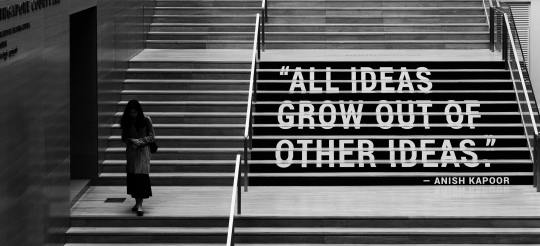
We’re Offering Free 1-Hour Digital Consultations
The Covid-19 pandemic has forced arts, cultural and live performance organisations to shut down, move online, and work in totally new ways. We don’t know how long the crisis will last, and we’re not sure what the world will look like in the immediate aftermath. But we do know that digital technology is going to be part of the strategic toolkit as we come out of this, and that as a result many leaders will be re-thinking how they make use of technology.
If you’re working through the ramifications of what this means for you, and would like some strategic consultation about the issues or challenges you’re facing, read on...
If you are:
a CEO, or senior marketing, development or IT leader,
And, you work in an arts, cultural, or live performance organisation,
I’d like to offer you a FREE consultation about anything digital-related you’d like to talk through. If you want to brainstorm a digital challenge, talk through your digital strategy for critical feedback, or just have a digital counselling session, this time is for you.
Perhaps you want to talk about making money from online performances or archival footage, develop your digital donor strategy during lockdown, or consider simpler online booking models during the period of social distancing.
About me: I’m Managing Director at Made Media — a leading digital strategy and design agency that works with live performance and cultural institutions across the world. I’ve got many years of experience working with arts and cultural organisations on their use of digital technology, with a particular focus on user experience, ticketing and CRM. I have a background in digital technology and arts management. Prior to joining Made, I worked as Administrative Director at The Place in London – the UK’s leading centre for contemporary dance development — and between 2009 and 2015 I held a series of leadership roles at Spektrix in both the US and UK.
Consultation slots are limited, and can be booked here: [We’ve now removed the online booking link, but if you’re interested in having a digital consultation, email us at [email protected] and we’ll set something up]
The small-ish print:
Sessions will last up to 1 hour and will take place via Zoom.
You can come with a specific or general digital challenge, or email me in advance if you prefer (details will be in the confirmation email).
Session participation is limited to 2 people per organisation.
You don’t have to be a Made client to sign up. If you are a Made client, and would like this sort of consultation, do reach out to me or your account manager and we can set something up outside of this booking process.
Sessions are open to leaders at both commercial and nonprofit organisations.
Session times are listed as British Summer Time, you can change your time zone as you book to help you match it against your diary. I’ve tried to choose time slots with a good crossover between Europe and all parts of the mainland US. If these time zones don’t work out for you, please get in touch via our website and we’ll try and work something out.
0 notes
Photo

A Most Unusual World Theatre Day
Today is World Theatre Day, and the theatres of the world are shut down; along with the concert halls, opera houses, museums, galleries and other venues that enrich our public lives.
I've been lucky to enjoy performances in famous venues all around the world, from Shakespeare's Globe, to the Sydney Opera House, to the Metropolitan Opera.
I'm fortunate that my job often allows me the privilege of visiting some of these venues when no-one else is there. It is very special indeed to experience the pure silence of an empty Walt Disney Concert Hall, or the expanse of the stage at the David H. Koch Theater, home of the New York City Ballet, when the masking is flown out. The buildings themselves are an intrinsic part of the cultural experience. These places are supposed to be full of people, yet they still manage to fizzle with energy and potential when they’re empty. That should give us hope.
I've spent years working in and around theatres, as an administrator, technician, box office assistant, and as a consultant and supplier. I've also spent time working as a lighting designer.
Lighting design is true theatrical power and magic. It's thrilling to plunge a 2,000-seat auditoria into darkness, or to use light to transform an old church into a den for Shakespeare. It makes you viscerally appreciate how a shared environment can alter your response to art and ideas, and why these public spaces are so important (and why, as well, they need to be accessible to everyone).
Our cultural institutions are stepping up in this unprecedented moment, and stepping into our homes. The Metropolitan Opera's nightly streams have been reaching hundreds of thousands of people. The UK's National Theatre is opening up its back catalogue of NT Live performances online for free. Around the world, countless artists and companies are finding new ways to work and reach audiences who can no longer gather together to experience art and culture together in a shared physical environment.
This is all very welcome, and speaks to the vital part that art and culture plays in our lives.
But none of this takes away from the magic of experiencing these incredible venues in person, with their history and aura, and I can't wait until the day that they're full once again.
0 notes
Photo
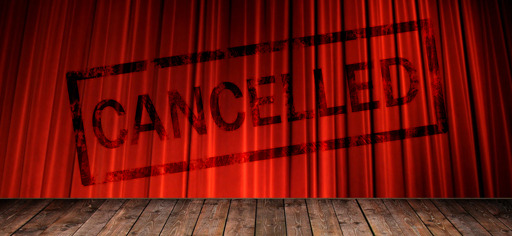
Power Up Your Communication During Powerless Times
During these exceptional and difficult times that we are all experiencing, how you communicate with your customers and patrons will have a strong impression and if done right will have a positive impact when things finally start getting back to some sort of normality.
We wanted to help power up your communication efforts by offering our top tips and thoughts :
The power of Email: If you can, don’t wait for your customers to contact you with regards to cancellations or postponements. Make first contact. Email is the logical choice to achieve this.
Whichever ticketing system or event management system you use, you should be able to export a list of all the email addresses of those who have booked tickets for the event to use as your mailing list. Make sure you keep this list separate from existing marketing lists, the last thing you want is to annoy those already disappointed customers with unsolicited emails.
When creating your communication make sure to set the options that are open to customers out clearly with clear call to actions. If you are refunding all customers make sure you set expectations of when this will be processed, as the last thing you want is to communicate an incorrect timeframe which will result in added pressure to systems and processes that will no doubt already be overloaded. If you are asking customers to perform any actions on your website or to call your customer services, it might be a good idea to stagger your send, to help spread the demand on resources.
If you are asking customers to visit your website, triple-check your links. It may sound obvious but if you are rushing to get a communication out, a mistake here can make all your efforts null and void.
The Power of Search: You no doubt will see an increase in website traffic as more and more customers search to see if their event is still going ahead. There are things you can do to communicate with customers within search engines, especially Google. The first is to make sure you take advantage of the new schema data tags which have been introduced as a result of the current pandemic. This means that you can tag events with statuses, such as cancelled and postponed, which will then be pulled in to Google’s rich results. I would also recommend using Google My Business posts. These posts are similar to those you might see on Facebook or Linkedin but appear in your brand search results. You can include images and links within these posts. The advantage of these is they take up a prime position in results, especially with mobile results.
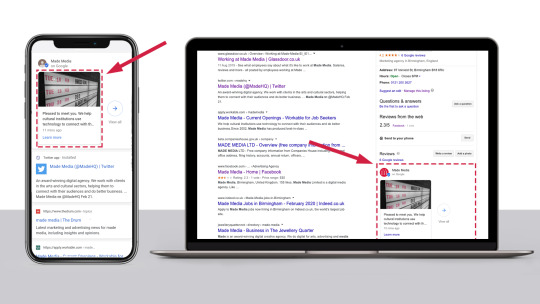
Make sure to check your Google Search Console more regularly as this will give you an insight into what your website visitors are searching for to reach your site and what information they are coming to your site to find. You can also compare this to any site search results if you have functionality on site. This will help you work out your hierarchy of information and will inform how you organise this on site along with how you prioritise new content.
If you are still running any paid search ads associated with brand keywords make sure you include your main Covid-19 information page within site links, this will help your customers get to the information they require more efficiently.
The Power of Content: Obviously you will have published or will be publishing posts via your social channels keeping customers up to date with developments, which is the right thing to do. This is really a note about communicating with current and potential customers while your current run is affected. The current situation will present opportunities, as more and more people are isolated, spending more time at home, and they will be consuming more online content. At the same time, you may also find you have an opportunity to spend a little more time creating engaging and creative content of your own. Make sure you keep the audience in mind to what you create and share, think about their current situations and also pay attention to any current social trends, challenges and conversations, these will offer great opportunities to unleash your creativity.
Don’t neglect the content you already have. Many art organisations will have a fantastic back-catalogue of quality content from the archives and many of the great arts organisations are now making it available online for free, such at MET Opera, The Royal Albert Hall and The National Theatre. This not only gives the chance for your regular visitors a chance to continue to enjoy the arts but also can be a great opportunity to reach new audiences.
Remember what you do now as an organisation will have a long-lasting impression on your current customers and things will return to normal, whatever that is.
We know each organization will be facing its own challenges and we are here to help. If we would like to discuss anything mentioned in this article further we would be more than happy to help get the right strategy for you. [email protected]
0 notes
Photo

New Starter: Andrew Fletcher
Has learning all about Sam left you eagerly wanting more? Never fear, we have you covered. Continuing with our series of posts introducing our new starters we would like to introduce another new member to the super talented Made family.
Next up...
What is your name? Andrew Fletcher
And Where are You from? The Venice of the North - Birmingham
Role: Digital Analyst
What is it you do? My main responsibility is to offer support and expertise to our clients when it comes to their digital marketing endeavours. This can obviously cover a wide variety of requests, such as producing and delivering SEO plans, problem-solving tracking and analytics issues, advice on digital marketing strategy and managing marketing campaigns.
Tell us a little about your professional journey to Made? I have over 8 years of digital marketing and data analysis experience, 5 of which was spent at Drayton Manor Park, where my office was opposite the ‘Accelerator’ (Formerly Ben10) rollercoaster. So I feel I have acquired quite a bit of knowledge and insight into the challenges organisations have, trying to persuade potential customers to purchase tickets to an event.
Before that, I worked at MobileFun, who sold mobile phone accessories all over the world. It is here where I found my calling in digital marketing and analytics.
I am passionate about getting actionable insights from data and how this insight can help maximise ROI on marketing activity and digital investment.
I also have a degree in Drama. I felt if I couldn’t have a career on the stage or around the stage, helping those that do was just as good.
What do you like doing when you're not working? I used to like doing a wide variety of things, from video gaming to watching sports, but that all seems a distant memory now that I have a 2-year-old son. Now I spend most of my time making sure he hasn’t put the TV remote in the washing machine or the car keys in the bin.
What is your proudest achievement? I once managed a 12 dart checkout in darts; I’ve called myself Andrew ‘The Archer’ Fletcher ever since.
What is your slogan in life? Only worry about the things you can actually affect or change.
What is the best thing you’ve ever seen performed? Julius Caesar at the RSC. I went on a school trip when I was about 12. Blew me away and gave me a lifelong love of the theatre and togas.
'Alexa...' or 'Hey Google...'? Hey Google... turn the heating down (I'm sure my wife was raised in a volcano).
If you were an Animated Character, who would you be and why? Carl (the elderly man) from Up - I'm just a little grumpy and want to be by myself from time to time.
What would the title of your autobiography be? 'Don’t waste your money’… It’s a very short book
What is the best thing you've MADE for someone or have had MADE for you? I made a Star Wars mobile for my son before he was born. X-Wings, TIE-Fighters and Star Wars music — even I was impressed by my handy work. It was the first thing I did when my wife told me she was pregnant. I think it was my nesting stage.
0 notes
Photo

New Starter: Sam Harper-Wallis
Here at Made, we are always on the look-out for talented and passionate people who can help us on our mission to provide clients with a first-class service.
Over the past few months, we have been lucky enough to find a few such individuals, so over the coming posts, we wanted to introduce you to them officially, whilst also welcoming them into the Made family.
We asked our new starters to answer a few questions to try and learn a little more about them and we thought we would share their answers with you.
First up...
What is your name? Sam George (only if I am naughty) Harper-Wallis
And where are you from? Stourbridge
Role: Digital Project Manager
What is it you do? In a sentence... I facilitate the delivery of the scope of a project for Made Media's clients.
In a paragraph… My job as a project manager involves many different functions: cat herder, scope wrangler, delivery man. As a PM it's my job to watch over and coordinate projects to make sure that we can give the client exactly what they need on time and budget. Day to day this includes project client calls, trello management, testing, SoW writing, sprint briefing, requirement defining, and dependency gathering.
Tell us a little about your professional journey to Made? In 2010 I went to university in Manchester to study Cellular Molecular Biology. I always had a passion for science, especially biology, so it was an easy choice.
After completing university I started to look for a job so naturally as a newly minted science graduate the obvious choice was to become a recruitment consultant. I did this job for around 6ish months, before being moved into a contracts manager/business manager role to scout out for new business opportunities.
I then fell into a product owner role with a new business being spun out from my company, focusing on supply teachers for the education sector. While working as a product owner, I was also dipping into project management. I really enjoyed this side of the business, so I decided to look for a job with an agency which my mentor at the time suggested would be the best challenge for me.
I moved to a small bespoke agency in Manchester, but I knew I wanted to move back home, so in May 2018 I decided to take an opportunity in Birmingham as a Digital Project Manager, with another agency based in the Jewellery Quarter. During my first year, I worked with some massive clients and really honed my project management skills.
Through this project management work, I started to work with the operations director who helped me implement changes which improved company-wide cohesion. I was then offered a new role that sat between the account and studio team. Here I was the gatekeeper for all things process. The studio process, work request process, support and SLA process. During this time I implemented new processes to improve efficiency. I did this for over half a year but my heart was elsewhere. I wanted to get back in front of clients and deliver great projects which I can be proud of.
In October I had an interview here at Made. We take a really pragmatic approach to development resource and project management which appealed to me. So I was extremely pleased when I was offered the job as a project manager.
I joined in November and so far I am loving every day!
What do you like doing when you're not working? Mostly cooking, gardening, eating, walking the doggo.
What is your proudest achievement? I completed Bravo Training in the Army Reserves. I started my 16 days of training at Grantham, getting up at 5 am and going to bed, at some times 11 pm. This wasn’t the hard part, nor the constant exercise or sleeping in the cold or even drills. It was being away from my girlfriend Hannah.
What is your slogan in life? You can't control people's actions but you can control your reactions to them. #stoic4life
What is the best thing you’ve ever seen performed? Cirque du Soleil.
'Alexa...' or 'Hey Google...'? Hey Google...
If you were an Animated Character, who would you be and why? My girlfriend helped me answer this as I was struggling - "You're Jimmy Neutron - You have a massive head, not because you're clever, you just have a massive head".
What would the title of your autobiography be? The man with a massive head.
What is the best thing you've MADE for someone or have had MADE for you? I make the best lasagne - FACT.
0 notes
Photo

Stop Playing Yourself
Ten traps that are stalling your digital project, and how to avoid them.
Millennial thought leader DJ Khaled popularized the phrase ‘Congratulations, You Played Yourself’ in 2015, but I like my hip-hop a bit more conscious, so for me the phrase originated in 1996 in a deep cut from Jeru The Damaja’s sophomore album “Wrath of the Math’, that track being, of course, ‘Ya Playin’ Yaself’.
youtube
Turning to the Urban Dictionary for a definition we find that to play oneself is to:
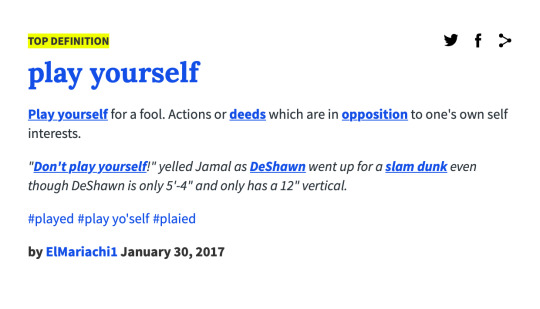
I think about that a lot when I think about big digital projects. Projects like designing and building a new website. We all start these projects with huge enthusiasm and strategic intent. And yet so often, by the time we launch, we’re a little bit ‘meh’. Perhaps - after all that money and effort the needle doesn’t move all that much. What we have now is a lot like what we had before, but with more in vogue typography.
Why is that?
In my experience it’s because we just can’t help playing ourselves. On lengthy digital projects, we have far too many opportunities to let instant gratification or bad habits sabotage our strategic goals. We play ourselves. I want to help you to recognize when you’re playing yourself, and to arm you with some tactics so that you can stop.

I’m going to do that, by describing ten traps that I often see cultural organisations fall into, and suggesting some tactics for getting out of them.
Trap #10 Building a Monument Trap #9 100% Digital Coverage Trap #8 Divide & Conquer Trap #7 Designing for your CEO’s smartphone Trap #6 False Prophets Trap #5 Post-it Fetishism Trap #4 Building not Buying Trap #3 Buying not Bodging Trap #2 Bogus User Stories Trap #1 Cutting Against the Grain
0 notes
Photo

Trap #10: Building a monument
In most digital projects we are trying to build services that your patrons want to use. We have known for many years that users interactions on the internet are overwhelmingly task-driven. They have an outcome in mind, whether that’s a ticket, a customer service issue, confirmation of a piece of information, a subscription, whatever. They want to take the shortest route possible to get that task done.
As internal stakeholders though, we really value what we do. Of course - it’s our chosen profession, hopefully the thing we’re most passionate about. And our organizations represent the aggregation of all that passion. So inevitably, whilst we start out trying to design great customer experiences we are liable to overestimate how invested the end user is in our organisation at that moment, and to start believing that the user is here to find out more about us, in an abstract sense.
Before you know it, you’ll see that efforts have subtly shifted from helping our users to succeed, toward building a monument to our organisation. There are certain tell-tale phrases that I look out when I think we might be transitioning into building a monument. One of them is
���There’s so much we do here that we just don’t talk about”.
Do you know what the archetype of this is? It’s that sad Education or In the Community section, where we list all of the programs we run in one place; even though each of those programs is specifically targeted at a different end-user profile, and there are limited opportunities to engage digitally with those programs.
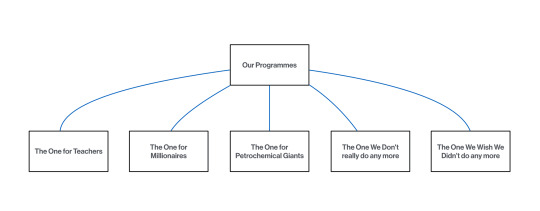
Another way this trap manifests is in redundant top-level navigation. When we start to see our digital assets as monuments to the organisation, navigation becomes about exploring all of the facets of the organization, rather than facilitating the common tasks that users are trying to achieve. This results in navigation where 80% of the traffic is verifiably directed to just one of the seven top-level navigational items. I’ll come back to this.
Congratulations - You Played Yourself
Some tactics to prevent you from building a monument:
At the start of the project as well as agreeing objectives agree those things that are your anti-objectives. We are not setting out to build a monument to the organisation. Every time you’re about to add a requirement to a backlog, ask yourself - are we building a monument? Encourage your team to ask that question, and give kudos for resisting the sentiment.
Find more appropriate outlets for this content. Your organization’s history probably makes for a very worthwhile Wikipedia entry and it’s a better trusted source for people who are genuinely interested. Personally, if I’m researching a topic I skip the official site, and go straight to the Wikipedia entry that is usually to be found at SERPs position 2. Because I know what I’m going to get. Go wild on Wikipedia. No-one’s stopping you. If you need to compile an overview of all the great work you do, because this content is targeted at a very specific end-user - eg, a charitable trust, then create a document, or a video especially and send it to them. There’s nothing to stop you from linking out to both of these assets from your digital project.
Obviously, if you have a heritage lottery fund to fund a digital archive project, building a monument is the objective, so you can cheerfully ignore everything I’ve just said. In fact do the opposite.
Trap #10 Building a Monument Trap #9 100% Digital Coverage Trap #8 Divide & Conquer Trap #7 Designing for your CEO’s smartphone Trap #6 False Prophets Trap #5 Post-it Fetishism Trap #4 Building not Buying Trap #3 Buying not Bodging Trap #2 Bogus User Stories Trap #1 Cutting Against the Grain
0 notes
Photo

Trap #9: 100% digital coverage
Many well-meaning digital and customer service people are of the opinion that if your organisation offers a service to patrons it stands to reason that users should be able to self-serve over digital channels. The phrase it stands to reason is dangerous because it abdicates responsibility for research and for using our resources wisely where they will have the most impact.
I’ll give you a clear example that we come across time and again. You’re two thirds of the way through some major web build, and suddenly someone remembers the scheme. It’s some kind of youth access scheme that the artistic director came up with a few years ago. Twenty young people (or to be more accurate, their parents) took it up last year. Everyone knows that the scheme should be cancelled, but no-one has the authority to make the call, or the desire to plead with the Artistic Director. So now, when you should be QAing your major web build, what you’re actually doing is building a dedicated application that includes identity checking, parent-access accounts, the whole nine yards, to be used by approximately twenty people. It costs £20K to do it. You’re spending £1,000 per user to subsidise 4 tickets each with a total value of £200.

Congratulations - You Played Yourself
Some tactics:
Let’s let go of the idea that everything you do should have a digital interface. Let’s treat our in-demand, hard to recruit and retain digital resource carefully. Before we start considering anything a requirement, let’s ask - how many people are using this service? What’s it costing per user to digitize this service? There’s actually a simple formula you can use: Manual_task_in_hours_per_week * Salary * 1.3 / 38 > Development_cost / Lifespan_in_years ? 2 hours per week * 35K * 0.0342 * 5 = £12,082 So in this case if a manual task took someone earning £35K two hours per week, you need a development cost well under £12K to make it worthwhile digitizing and it will take five years to earn that value. And guess what - code needs maintaining too, there will be maintenance, hosting, changes to browsers and legislation. So a degree of human intervention will always be required.
By the way - this doesn’t just hold for customer-facing stuff. Your own digital team will instinctively want to automate lots of things that aren’t even customer-facing too. Is it justified on a cost basis? You should check. Digital staffers are kind-of the opposite of luddites, they find manual tasks offensive, even when they’re being paid to do them.
It might be outside of your control to close a scheme with few users. But you might reasonably say that the number of users is too small to justify the digital development. Make that scheme ‘concierge only’. Service it through phone or chat interfaces.
I’d extend that thinking to anything legacy. And you might be surprised by what I’d consider legacy: Direct Debits, Microsoft Edge, Desktop Computers, Paper Tickets
Yes people still use these things now. But are you confident that it’s worth investing in them now for your new digital project, based on a 5 year lifespan?
Trap #10 Building a Monument Trap #9 100% Digital Coverage Trap #8 Divide & Conquer Trap #7 Designing for your CEO’s smartphone Trap #6 False Prophets Trap #5 Post-it Fetishism Trap #4 Building not Buying Trap #3 Buying not Bodging Trap #2 Bogus User Stories Trap #1 Cutting Against the Grain
0 notes
Photo

Trap #8: Divide & conquer
I think by now we’re probably all aware that you’re not supposed to structure your top-level navigation based on your organisations departmental structure.
And yet - that’s still really common actually, we just swap the department names for their customer-facing equivalent, Fundraising becomes Support Us. That’s why the biggest IA challenge on most projects is deciding what the correct customer-facing term for the Education department section is. Learn? Interact? Dive In? Explore? Go Wild?
But even if we’re not doing that. How do we figure out what our website requirements are?
Usually, we draw together the departments, so that they can take turns reciting their wishlists. This is setting off on the wrong foot for a couple of reasons.
Departmental thinking leads to bad UX. If you ask a fundraising department what they’d like from the website, maybe they think every transaction should be interrupted with a colossal donation ask. Maybe that impacts on ticketing revenue, but why should they care? And vice-versa.. The person responsible for the overall UX needs to look at the total revenue to find the best compromise. They can’t be thinking on behalf of one department.
Not all departments have the same exposure to end-users, revenue or technology. But by treating requirements gathering as a round-robin departmental exercise all are elevated to the same status in digital terms, regardless of the objectives of the project. This process encourages departments to think of elaborate features that their users might like, without necessarily user testing any of this, or without any reference to a cost-per-user or cost-per-revenue calculation.
Often, the department leading the project, has no real intention of delivering these features. However, they never explicitly reject them, so they crowd development backlogs and schedules until they are finally ‘back-burnered’, causing disappointment and distrust. So to get over the trust issues, the disappointed departments are consulted on the next big project and the cycle starts up again.

Congratulations you played yourself.
Here are some tools:
Figure out which department is actually responsible for the project. If it’s a dedicated digital department, answering directly to someone on the board, so much the better.
Be clear about the organizational objectives for the organisation and name them in real, user-focused terms.
Invite departmental heads, and maybe some of their operational people to contribute to requirements gathering. But not as the representative of their department. They are there as domain experts to help refine the overall requirements. Smart people can work for the objectives of the overall organisation, and will have real insight into how things work, things that are easy to contribute, small changes that could have big impacts for them. That’s what we want.
Trap #10 Building a Monument Trap #9 100% Digital Coverage Trap #8 Divide & Conquer Trap #7 Designing for your CEO’s smartphone Trap #6 False Prophets Trap #5 Post-it Fetishism Trap #4 Building not Buying Trap #3 Buying not Bodging Trap #2 Bogus User Stories Trap #1 Cutting Against the Grain
0 notes
Photo

Trap #7: Designing for your CEO
One of our local rivals has a question on their client-engagement survey: “What Smartphone does your CEO use?”. Any digital agency project manager will immediately realize why they do that, and it’s a pretty smart move. You see they’ve seen plenty of carefully-researched, strategic digital projects de-railed at the last moment, because the organization’s CEO took a look at it on their Blackberry Classic Q20.
Everyone on the digital team was clear about which browsers and devices they would be supporting, and this particular model does not represent a rounding error on the end-user analytics, but it doesn’t matter, because this is the only end-user that really counts at this moment in time.
It’s not just devices. I’m a CEO. Do you know how I got to be one? Well I’m not shy in coming forward with opinions. You ask me to feed back on something, I’m ready to go with feedback. Oh you want considered feedback? I don’t have time for that, I’m an executive.

You know what else I’ve got? Ideas - so when you show me your carefully-crafted digital project scheduled for launch next week, I’m not going to pat you on the head for a job well done. I’m more likely to ask you why it’s not Spanish bi-lingual. Oh - you think that’s unreasonable? You don’t get to be CEO by doing what’s reasonable. I’m including Artistic Directors here by the way.
It’s quite easy for digital teams to start high-fiving each other, because they’re being user-centered, using all the latest techniques and jargon, getting lots of validation from their piers, and feeling really good about where they’re going, but totally forgetting to take management with them.
Congratulations you played yourself.
Here’s what you should do:
Engage early and engage often. One of the most frustrating things about engaging with upper management, is that they have plenty of opinions, but seem strangely reluctant to take decisions. They seem to sketch out a world of possibilities, and leave you to join the dots. Here’s the secret; management are asked to take decisions all day long and they are tired of it. So stop asking for feedback, but keep management appraised of the decisions you are taking. If one of those decisions is directly in opposition with their strategy they’ll let you know, and you can course correct. I suggest you present monthly if possible. Keep it really quick and top-line. “We’ve decided our top three goals are X”, “We’re aiming to increase Y by Z in-line with our mission”
Take note of feedback. When you get opinions and feedback regardless, take note, and think about how you are going to pay lip-service to them in your next presentation. If the CEO said they don’t like dark backgrounds, find a page with a light background and screen-shot that one for your presentation. If the CEO said it needed to be dual-language don’t laugh that off as unattainable, figure out a range of options and coverage, from telling the user to try Google Translate to guesstimating the true cost of doing it properly. Be ready at the next meeting to drop in those considerations, and tie them back to their original request. CEOs might have temporarily forgotten their previous feedback. If you showcase the ways in which you’ve taken it on board, that will help fend off new, entirely contradictory feedback. And whilst CEOs might be ready at all times with ill-founded opinions, they usually respond well to well-researched options. So come back with evidence.
Trap #10 Building a Monument Trap #9 100% Digital Coverage Trap #8 Divide & Conquer Trap #7 Designing for your CEO’s smartphone Trap #6 False Prophets Trap #5 Post-it Fetishism Trap #4 Building not Buying Trap #3 Buying not Bodging Trap #2 Bogus User Stories Trap #1 Cutting Against the Grain
0 notes
Photo

Trap #6: False prophets
You know this guy? He’s Shingy. AKA David Shing. His job title was Digital Prophet at AOL from 2011 to 2017. He now works at Verizon, where his job title is… Digital Prophet. He’s very much digital’s answer to DJ Khaled.
He does look a bit like he’s stepped out of The Matrix, and I guess that might be what you want your digital guru to look like. I actually watched one of his videos in preparation for this, and guess what, he has some totally reasonable and well founded opinions about things. But fundamentally he shows up at conferences and tries to see into the future. When you think about it, there’s nothing new about employing futurologists. Today they make pronouncements over Twitter, two thousand years ago, they’d be communicating via chicken entrails.

I think a lot of us get quite a lot out of conferences, they’re a safe-for-work way of expanding your mind, and we all leave feeling a little more enlightened. You don’t get an interesting conference talk by telling people that they’ll get best results by tracking progress, and working diligently to course correct. You’ll get a lot more traction telling people that no-one ever visits home page or whatever. That’s a gross oversimplification by the way. But no-one’s got time to put across subtle arguments at a conference.
And I think that’s why it’s so tempting. If you want to expand your mind, sometimes the best way of doing it is to step outside your day to day into a parallel universe where all the rules are different. Sometimes developers do it by switching programming language. It’s a way to rejuvenate your interest, but it doesn’t mean everything you learned before is wasted.
The problem comes, when you hear someone speak, and get so blown away that you decide that you have found your Guru, entrusting your digital operations to that individual by getting them to set up your team, or run your RFI. I come across this a fair amount. Someone might have got off to a good start at a major media organisation. They’ve jumped around as a consultant ever since. They’ve maintained their contacts, but always seem to jump ship just before the thing they were working on actually gets delivered.
Now they’re running your digital processes. They insist the product has to be built on a new obscure functional stack that’s going to 10X your productivity. They invite their cronies to pitch for your RFP. They keep trying to apply big media strategies to your organisation. They wind-up your staff with their impractical opinions. They’re constantly on their phone lining up their next appointment before the shit hits the fan.
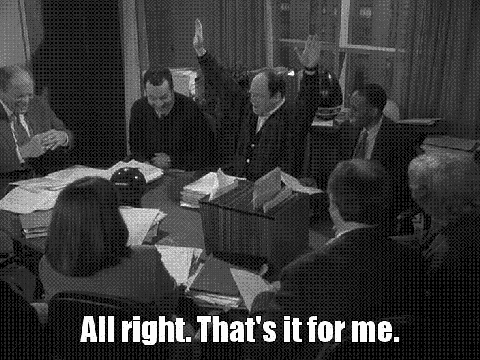
Congratulations you played yourself.
Here’s how to avoid this.
Be wary of putting one-man/woman bands in charge of your strategy. You’re likely to be getting one person’s very biased opinion.
When checking references, look beyond the strategic interventions, and ask about outcomes. Yes, they ran a report, or a process, but what were the outcomes of that in the real world? Did the process lead to a tangible output? Was the consultant still around to see it?
Maintain a large list of influences. I follow people on Twitter who are agile advocates, I also follow people who think agile is killing the art of software architecture, people who think it’s inhumane to deploy on Fridays, people who think your organisation is failing if it can’t. It helps me to take on-board new ideas, without falling for hype. Getting outside my comfort zone and seeing things from different perspectives without slavishly following trends.
Don’t get misled by False Prophets, just follow what I do.
Trap #10 Building a Monument Trap #9 100% Digital Coverage Trap #8 Divide & Conquer Trap #7 Designing for your CEO’s smartphone Trap #6 False Prophets Trap #5 Post-it Fetishism Trap #4 Building not Buying Trap #3 Buying not Bodging Trap #2 Bogus User Stories Trap #1 Cutting Against the Grain
0 notes